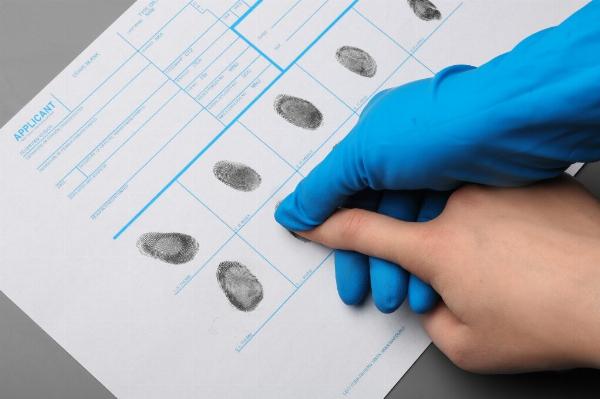 Link Insertions on Real Blogs – Quick Wins for Better Rankings!
Link Insertions on Real Blogs – Quick Wins for Better Rankings!
Steps to Change Your Name in Edmonton Officially
Written by Hardik Shah » Updated on: June 17th, 2025

Changing your name is an important decision that often involves personal, cultural, or legal considerations. Whether it's due to marriage, divorce, personal preference, or aligning with gender identity, the process of changing your name in Edmonton, Alberta, follows specific legal steps and requirements. This guide provides a comprehensive breakdown of the name change process in Edmonton, including its purpose, associated costs, and validity.
Purpose of Changing Your Name
The decision to change your name can be influenced by several factors, such as:
• Marriage or Divorce: Adopting a spouse’s surname after marriage or reverting to a maiden name after divorce.
• Gender Identity: Changing a name to better reflect one’s gender identity.
• Cultural or Personal Reasons: Choosing a name that aligns with cultural identity or personal preference.
• Correction of Errors: Fixing misspelled names or errors in official documents.
• Family Cohesion: Ensuring uniformity in last names among family members.
Whatever the reason, the name change process ensures that the change is legally recognized across government and non-government records.
Eligibility Requirements
Before initiating a name change, ensure you meet the eligibility criteria:
1. Residency: You must be a resident of Alberta.
2. Age: Applicants must be 18 years or older. Minors require parental or guardian consent.
3. Purpose: The name change should not be intended for fraudulent purposes or to evade legal obligations.
Steps to Change Your Name in Edmonton
Step 1: Obtain and Complete the Application Form
The name change application form is available from authorized Alberta registry agents or can be downloaded from the Alberta Vital Statistics website. This form includes sections for personal information, current name, proposed new name, and reasons for the change.
Step 2: Gather Required Documentation
To support your application, you need to provide:
• Government-Issued ID: A valid photo ID, such as a driver’s license or passport.
• Birth Certificate: An original or certified copy. Non-Canadian applicants may need additional documents like a citizenship certificate or permanent resident card.
• Marriage Certificate (if applicable): Required for name changes due to marriage.
• Divorce Certificate or Court Order (if applicable): Necessary for reverting to a previous name after divorce.
• Police Clearance Certificate: Mandatory for applicants aged 18 or older to ensure the name change is not being used for fraudulent purposes.
• Completed Application Form: The Alberta name change application must be filled out completely and accurately.
Step 3: Submit Your Application
Take your completed application and supporting documents to an authorized Alberta registry agent in Edmonton. The agent will verify your documents and collect the required fees.
Step 4: Processing and Approval
The application is forwarded to Alberta Vital Statistics for processing. Approval typically takes six to eight weeks, during which your documents and police clearance are reviewed.
Step 5: Receive Your Legal Name Change Certificate
Once approved, you will receive a legal name change certificate by mail. This certificate officially recognizes your new name and is required to update identification and records.
Cost of Changing Your Name in Edmonton
The costs involved in legally changing your name include:
1. Application Fee: Approximately $120, paid to Alberta Vital Statistics.
2. Registry Agent Fee: Additional fees ranging from $25 to $40 may be charged by registry offices.
3. Police Clearance Fee: Criminal record checks typically cost $30 to $75, depending on the issuing agency.
4. Document Replacement Costs: Updating government-issued IDs, such as a driver’s license or passport, may involve additional replacement fees.
________________________________________
Validity of the Name Change Certificate
The legal name change certificate issued by Alberta Vital Statistics is permanent and remains valid indefinitely. It serves as proof of your new name and is required for:
• Updating government-issued identification, such as driver’s licenses and passports.
• Changing your name on financial accounts, property deeds, and employment records.
• Modifying school, medical, or insurance records.
________________________________________
Challenges in the Name Change Process
1. Delays in Police Clearance
Obtaining a police clearance certificate can take time. It is recommended to initiate this step early to avoid delays in processing your application.
2. Missing or Incorrect Documentation
Incomplete or incorrect documentation is a common reason for application rejections. Double-check all requirements before submission.
3. Updating Records Post-Approval
After receiving your name change certificate, you must update your name across all relevant records. This can be a time-consuming process but is essential to ensure consistency.
Tips for a Smooth Process
1. Plan Ahead: Start early to gather documents and complete the application process without rushing.
2. Keep Copies: Make copies of your legal name change certificate for reference, while using the original for official purposes.
3. Create a Checklist: Track all documents and agencies where updates are needed after the name change is approved.
4. Seek Assistance: If you find the process complex, agencies like SekCheck in Edmonton offer guidance to simplify the application.
How SekCheck Can Help
While the name change process in Edmonton is straightforward, it can feel overwhelming due to the required documentation and formalities. Agencies like SekCheck specialize in assisting individuals with name change applications. Their expertise can save time and reduce the likelihood of errors, ensuring your application is processed smoothly.
Changing your name in Edmonton requires adherence to Alberta’s legal procedures to ensure recognition by official authorities. By understanding the steps involved, gathering the necessary documents, and accounting for associated costs, you can navigate the process efficiently. Once your legal name change certificate is issued, it serves as a lifelong proof of your new identity, allowing you to update your records and documents with confidence.
Note: IndiBlogHub features both user-submitted and editorial content. We do not verify third-party contributions. Read our Disclaimer and Privacy Policyfor details.
Men's Journal is a rugged and refined lifestyle adventure travel, food and drink Get in touch [email protected] to find out how we can help you reach everyday, affluent, and adventure seeking consumers on Men's Journal
Copyright © 2019-2025 IndiBlogHub.com. All rights reserved. Hosted on DigitalOcean for fast, reliable performance.













